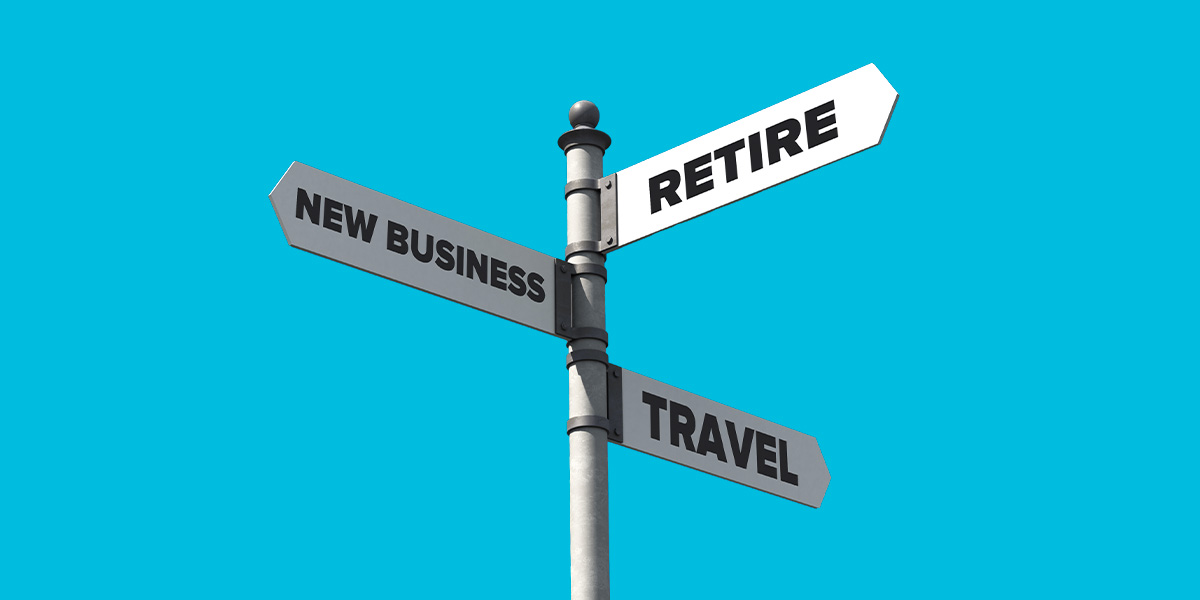-
Business Banking -
Insights
How to Apply for an SBA Loan
Loans from the Small Business Administration (SBA) are popular among entrepreneurs. That's because they feature benefits such as extended repayment periods and competitive interest rates, making them an attractive financing option. However, applying for these loans can be an intimidating and sometimes-complicated process.
If you are a small business owner evaluating loans, taking the time to understand the SBA application process and the different types of loans available can enhance your chances of submitting a successful application.
Here are the steps you can take to apply for an SBA loan.
Gather Correct Documentation
Prior to applying for an SBA loan, it’s important to gather all the necessary documentation you’ll need. This preparation is key to not only helping to ensure a smoother application process, but also increasing your chances of approval.
Here’s some documents you might need to apply for an SBA loan:
- Business Financial Statements: This includes your balance sheet, profit and loss statement and cash flow statements. These documents provide a snapshot of the financial health of your business and help lenders assess your ability to repay the loan.
- Tax Returns: You will need to provide recent tax returns for both the business and the personal returns of the principals. Typically, lenders require the last two to three years of tax returns.
- Business Licenses and Certificates: Depending on your business type and location, different licenses and certificates may be required. Make sure to have all legal documentation that shows your business is registered and recognized by local and state agencies.
- Resumes: Including resumes of the key members of your business team can help bolster your application. This showcases the experience and expertise behind your business, demonstrating a competent team capable of managing the business and repaying the loan.
- Loan Application History: If you have applied for other business loans, details of those applications may also be required.
While requirements may vary, lenders generally use these documents to verify the legitimacy of your business, evaluate your financial stability and determine your creditworthiness. Having these documents organized and ready to go can ease the application process and improve your chances of getting the financial support you need.
Determine the Business Needs
After you have your documentation in order, the next step in applying for an SBA loan is to carefully assess your business's financial needs. This can help you determine how much money you need, how you'll use it and even whether a loan is right for your business at this time.
Here are some factors to consider:
- Capital Requirements: Determine exactly how much money your business needs. This should be based on detailed financial planning and consideration of what you aim to achieve with the funding. For example, are you looking to expand your operations, purchase new equipment, increase inventory or simply stabilize cash flow?
- Repayment Plan: Consider how long it will take to repay the loan. Generally, it is advisable to look at your business’s cash flow projections to realistically estimate how much you can afford to pay on a monthly basis, including for principal and/or interest. This will help you decide on an appropriate loan term that aligns with your financial capabilities without straining your resources.
- Interest Rates and Fees: Understand the cost of borrowing. SBA loans typically offer more favorable terms and lower interest rates compared to conventional business loans, but it’s important to account for any associated fees and the total cost over the life of the loan.
- Collateral: Determine if you have assets that can be used as collateral. SBA loans often require collateral for securing the loan, which can include business assets, personal assets or both. Knowing what you can offer as collateral is important, as it affects the risk assessment by the lender and, potentially, the terms of the loan.
- Risk Assessment: Evaluate the risks involved with taking on the loan. Consider the economic climate, industry trends and your business's specific circumstances.
Select the Right SBA Loan
Choosing the right SBA loan program is key to aligning with your business needs. Each program has its specific conditions and advantages designed to support different aspects of business growth and stability.
Here are the most common SBA loan programs to help you identify the best fit for your business:
- 7(a) Loan Program: This SBA loan is typically ideal for business purposes such as obtaining working capital, refinancing existing debt, purchasing a business, buying out a partner and purchasing commercial real estate, equipment or supplies. It supports a range of business activities and offers a maximum loan amount of up to $5 million.
- 504 Loan Program: Best suited for major investments in fixed assets, the 504 loan is great for purchasing real estate or large equipment. It offers long-term, fixed-rate financing and is designed to promote business growth and job creation.
- SBA Loans for Commercial Real Estate: These loans are tailored for purchasing, developing or refinancing commercial property. They provide businesses with the backing they need to acquire real estate that will be used for business operations.
Picking the right SBA loan for your needs can be overwhelming. Here's more information designed to help you understand the differences between the two most common SBA loans.
Find a Lender
Once you've determined the appropriate SBA loan for your needs, the next step is to find the right lender. It's essential to choose a lender that not only offers SBA loans but also understands your business goals and can provide tailored advice. You have two primary types of lenders to consider: Standard SBA lenders and SBA preferred lenders.
Standard SBA lenders can process SBA loans, but they require direct approval from the SBA on each loan application. This process can be longer and may require more documentation.
On the other hand, SBA preferred lenders have the authority to approve loans autonomously due to their proven track record and trust earned from the SBA. This allows them to process loans more quickly and with less direct oversight from the SBA.
At City National Bank, we offer multiple SBA loan options and additional perks that come with combining these loans with a City National business bank account. As an SBA preferred lender, City National can streamline the loan approval process, ensuring you receive timely and efficient service. Additionally, customers who have both a business bank account and an SBA loan with us may experience some benefits, such as improved loan terms and a more integrated banking experience.
Contact the Lender & Fill Out the Application
After choosing a lender, the next step is to contact your lender and begin the application process. When contacting your lender, it's advisable to schedule a meeting or a call to discuss the specifics of your SBA loan application. During this meeting, you can ease any doubts, further understand all the necessary requirements and gather information on the next steps.
The application process for an SBA loan typically involves completing several forms, including the SBA loan application form, personal financial statements and possibly a business plan. Your lender will provide you with a list of documents and forms needed. It's important to review these documents thoroughly and provide accurate information in order to streamline the process and increase your chances of approval.
What Lenders Are Seeking in SBA Applicants
Ultimately, it's up to lenders to decide how much risk they're comfortable taking on with each loan they provide. This means they'll evaluate several factors when a business owner applies for a loan.
For example, many lenders will consider a set of criteria commonly referred to as the "Six C’s of Creditworthiness." These points are often used to evaluate the risk and viability of lending to a business.
While nothing guarantees a loan approval, understanding the "Six C's" can help you better prepare your application:
- Character: This refers to the borrower's reputation and track record of handling financial obligations. Lenders might look at credit history, references and sometimes even community standing to help them determine character.
- Capacity: This involves assessing your business's ability to repay the loan. Lenders will examine your cash flow records, financial statements and other relevant data to ensure that your business generates enough cash flow to cover loan payments.
- Capital: The amount of money you can invest in your own business. A substantial personal investment in the business may produce a favorable impression, suggesting the borrower is less likely to default.
- Collateral: To secure a loan, assets may need to be pledged. Collateral can include business or personal property that can be sold in case the loan isn't repaid.
- Conditions: These relate to the loan's purpose, the amount involved and the economic environment. Lenders consider industry-specific risks and how economic conditions might affect your business's ability to succeed.
- Credit Score: A strong business or personal credit score can impact your application. It indicates to lenders how reliably you can manage debt.
Make sure you discuss these criteria with your lender, who can provide further guidance specific to your situation and business needs.
Submit Your SBA Loan Application
After you have filled out the necessary application forms and compiled all required documentation, the final step is to submit your SBA loan application to your chosen lender. However, before you submit your application, it’s wise to have it reviewed by a trusted mentor or a financial advisor.
This step is important because it can help to ensure that all parts of your application are complete, well-organized and free of errors. A second set of eyes can also offer suggestions on how to improve your application, potentially increasing your likelihood of approval. They can provide feedback on your business plan, financial projections and the presentation of your documents, ensuring everything aligns well with the lender’s requirements.
Once you are confident that your application is in its best form, submit it to your lender. The submission can often be done electronically or in person, depending on your lender’s processes. Upon receiving your application, the lender will review all the details, assess your creditworthiness and determine whether you meet the criteria for the SBA loan. This process can take some time, as it involves a thorough review of your financial background, business model and plans for the future.
After submission, the lender will inform you of the next steps. If additional information or documentation is needed, they will reach out to you. Once all information has been provided and reviewed, the lender will make a decision on your loan application. If approved, they will present you with a loan offer, which includes the amount, rate, term and other relevant items. Review these terms carefully with your advisor before accepting the loan.
This article is for general information and education only. It is provided as a courtesy to the clients and friends of City National Bank (City National). City National does not warrant that it is accurate or complete. Opinions expressed and estimates or projections given are those of the authors or persons quoted as of the date of the article with no obligation to update or notify of inaccuracy or change. This article may not be reproduced, distributed or further published by any person without the written consent of City National. Please cite source.
City National Bank Small Business Administration (SBA) Lending Programs are subject to credit and collateral approval. A due diligence fee may be required upon approval, and other fees and other restrictions may apply. For SBA loan products, SBA eligibility is also required. Terms and conditions subject to change.





